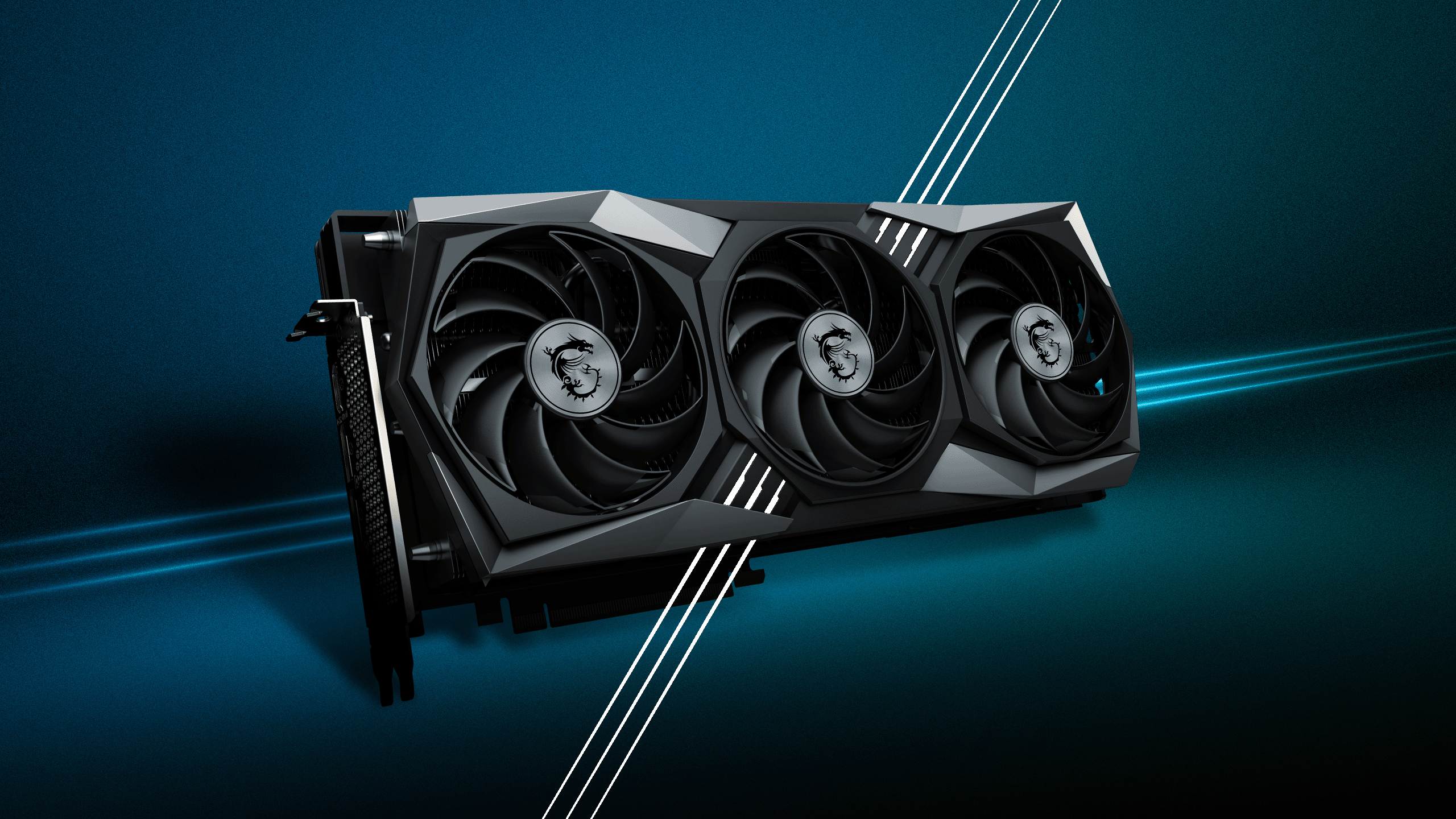MSI RX 7000-series graphics cards mysteriously disappear — AMD commitment questioned as supply dissolves worldwide
Is MSI leaving the AMD GPU market?

MSI Radeon RX 7000 series graphics card supply has mysteriously dried up worldwide. Hardware Unboxed on X (Twitter) reports that all existing Radeon RX 7000 GPU listings have disappeared in Australia. In the United States, we can confirm this is also the case. With the exception of a single RX 7900 XTX Gaming Trio listing, all of MSI's RX 7000 series supply has vanished.
We also dug through some German and Italian retailers and discovered the same thing, save for one or two RX 7900 series Gaming Trio listings. We have contacted MSI and will update the article if we get a response.
Did I miss this story? MSI has been completely removed from AMD's Radeon 7000 series, all existing products have been discontinued and they never released a 7700 XT/7800 XT. This all seems to have happened very quietly.April 26, 2024
We aren't sure what is happening, but it is undeniable that MSI has completely withdrawn from the AMD GPU market with its latest RX 7000 series GPUs. Evidence of MSI's departure has been apparent for a while now, with the company not debuting any of AMD's newer mid-range SKUs like the RX 7800 XT, 7700 XT, and the RX 7900 GRE. AMD has not built any RX 7000 series cards outside of the RX 7900 XTX, 7900 XT, and RX 7600 8GB — the first three RDNA3 GPUs AMD launched. MSI was also mysteriously absent from AMD's partner list during the debut of the RX 7800 XT/7700 XT.
We can only speculate on what is happening until we get an official answer from MSI. If we had to guess, MSI could very well be pulling out due to insufficient revenue from GPU sales. We have long suspected that board partners (including Nvidia partners) don't profit much from graphics card sales, even though most modern graphics cards are pretty expensive. This necessitates large graphics card production volumes to maintain profitability.
We would not be surprised if this is the sort of problem MSI is dealing with. It's no secret that Nvidia graphics cards outsell AMD graphics cards significantly, and if MSI isn't selling enough AMD cards, it has no choice but to shut down its AMD graphics card production lines.
Again, this is purely speculation. We have no idea what's actually going on behind closed doors. The good news is that MSI is still selling Nvidia graphics cards, so it's not like MSI is dropping out of the GPU game entirely, like EVGA.
Get Tom's Hardware's best news and in-depth reviews, straight to your inbox.

Aaron Klotz is a contributing writer for Tom’s Hardware, covering news related to computer hardware such as CPUs, and graphics cards.
-
Eximo Switching to team blue? Well, MSI used to make an A380, but I think that was the only card they made for Intel.Reply -
punkncat Hmm, interesting. I wonder if they just aren't selling well enough for their liking or if there are other factors at play?Reply -
They currently want to focus more on NVIDIA RTX GPUs right now, due to demand/interest from users, the company confirmed this to HardwareLuxx.Reply
Though the company will continue to offer AMD motherboards, but isn't saying that they'll stop offering AMD Radeon GPUs altogether, IMO.
When it comes to graphics cards, our focus at the moment is actually more on RTX cards. Nevertheless, the collaboration with AMD is essential and extremely relevant for us. We see a very positive development, particularly in the area of mainboards.
MSI Rep to HardwareLuxx
I guess MSI and other AIBs, all have to work with smaller margins on GPUs, and they have to decide whether a product is meaningful for them and if there's enough demand in the market or not. -
Notton With this kind of market share discrepancy, I'm not surprised.Reply
https://www.tomshardware.com/pc-components/gpus/gpu-sales-saw-32-year-over-year-increase-in-q4-amds-market-share-rises-to-19 -
ThomasKinsley Remember the old days when everyone and their grandmother needed a gpu to render more than the desktop? Now integrated graphics is capable of so much more. That must be affecting the bottom line of these companies.Reply -
Alvar "Miles" Udell MSI has already provided an official response and has confirmed their current focus is nVidia, not AMD.Reply
In fact, our focus at the moment is more on RTX cards when it comes to graphics. Nevertheless, the collaboration with AMD is essential and of the highest relevance to us. Especially in the area of motherboards, we see a very positive development here.
- so MSI vis-à-vis Hardwareluxx
https://www.hardwareluxx.de/index.php/news/hardware/grafikkarten/63484-msi-und-amd-grafikkarten-fokus-auf-den-rtx-karten,-amd-bei-den-mainboards-von-h%C3%B6chster-relevanz.html -
thestryker MSI the last few generations hasn't had many AMD models so them stepping back isn't particularly surprising.Reply
Until my current card everything since my GTX 275 was MSI and I'd be happy going back to them in the future. I'm less happy about the current state of nvidia and how they're doing business so would love for them to have kept up with AMD and added Intel. -
YouFilthyHippo This story comes out in parallel with the rumours that AMD is going to exit the high end market, not that they've been able to compete with NVidia at all there. Now MSI drops out. I wonder if AMDs GPU department is slowly going tits up and we just haven't been told. If NVidia is the only GPU company (Intel doesn't count), expect to pay $819,337,461,552.83 for the 6090 when it comes. I smell a GPU exodus from AMD and board partners are going to start dropping out little by little. That makes me wonder what will become to PlayStationReply -
rluker5 Reply
More likely AMD is going for the lower margin bargain GPU market with a stagnant product and MSI is facing the same decision that EVGA did.YouFilthyHippo said:This story comes out in parallel with the rumours that AMD is going to exit the high end market, not that they've been able to compete with NVidia at all there. Now MSI drops out. I wonder if AMDs GPU department is slowly going tits up and we just haven't been told. If NVidia is the only GPU company (Intel doesn't count), expect to pay $819,337,461,552.83 for the 6090 when it comes. I smell a GPU exodus from AMD and board partners are going to start dropping out little by little. That makes me wonder what will become to PlayStation -
Alpha_Lyrae ReplyYouFilthyHippo said:This story comes out in parallel with the rumours that AMD is going to exit the high end market, not that they've been able to compete with NVidia at all there. Now MSI drops out. I wonder if AMDs GPU department is slowly going tits up and we just haven't been told. If NVidia is the only GPU company (Intel doesn't count), expect to pay $819,337,461,552.83 for the 6090 when it comes. I smell a GPU exodus from AMD and board partners are going to start dropping out little by little. That makes me wonder what will become to PlayStation
AMD isn't exiting the high-end GPU market, but did cancel MI300-like Navi 41 (with 13 chiplets) for a variety of reasons. One of the main reasons is that Navi 41 would have competed with MI300 for advanced assembly time at a moment where AMD is massively ramping MI300 supply to fill orders for AI/HPC datacenters and supercomputers; these are very high margin parts, unlike consumer-grade Navi 41. The other is that the chiplet architecture with multiple graphics dies isn't quite ready yet and very likely needs more time to mature.
Gamers are pretty demanding, so TDRs and/or stutters (or nasty frametime spikes from pipeline stalls) are just not going to be accepted, even with the novelty of a multi-graphics-chiplet GPU (vs the single GCD on N31/32). That's a good way for AMD to cede even more marketshare to Nvidia. And we all know Nvidia is working towards chiplet GPUs as well, yet we've only seen B200 (Blackwell), which is a compute platform supporting multi-GPU on-package via a very high-bandwidth interconnect along the edge of the die.
It's more difficult, when rendering graphics in real-time, to have chiplets doing graphics workloads without the necessary logic to keep workloads from jumping to another chiplet and causing issues. Chiplet teaming, where two chiplets work together on workloads, can be achieved when interconnect bandwidth is high enough and power low enough to make feasible. A chiplet level cache might be needed to allow data reuse between the two teaming chiplets. A new Infinity Chiplet Cache might be able to fill that role, with say, 4MB of global shared chiplet cache * number of teamed chiplets; this can be virtualized L2 (2MB) in each chiplet that combines via direct interconnect (plus necessary logic) and essentially doubles data storage by removing any redundant items in each chiplet or any number of other ways caches can be formed and used.
